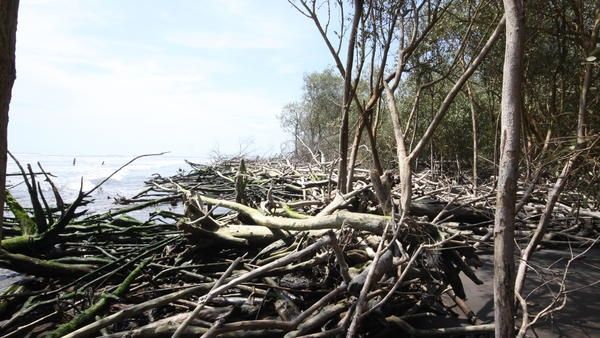Researchers at UC Riverside and Scripps Institution of Oceanography at UC San Diego have found that inland river dams can have highly destructive effects on the stability and productivity of coastline and estuarine habitats.
The researchers analyzed downstream ecosystems from four rivers, two dammed and two unobstructed, in the Mexican states of Sinaloa and Nayarit, which sit on the Pacific coast. They found dramatic coastal recession along the mouths of the obstructed rivers, including in vital ecosystems like mangrove forests, which provide protection from storms, commercial fishery habitats, and belowground carbon storage.
Study results appear March 13 in Science Advances.
The rivers studied run roughly parallel to each other through similarly developed land, into large coastal lagoon systems. The Santiago and Fuerte rivers have dams that provide hydroelectric power for the region but withhold 95 percent of the flow of these rivers. Meanwhile, the San Pedro and Acaponeta rivers are relatively free-flowing and undammed, with over 75 percent of the rivers remaining unobstructed.
Read more at University of California - San Diego
Image: Accumulation of dead trees at the mouth of the Santiago River which was dammed about 20 years ago. CREDIT: Ezcurra lab / UC Riverside


